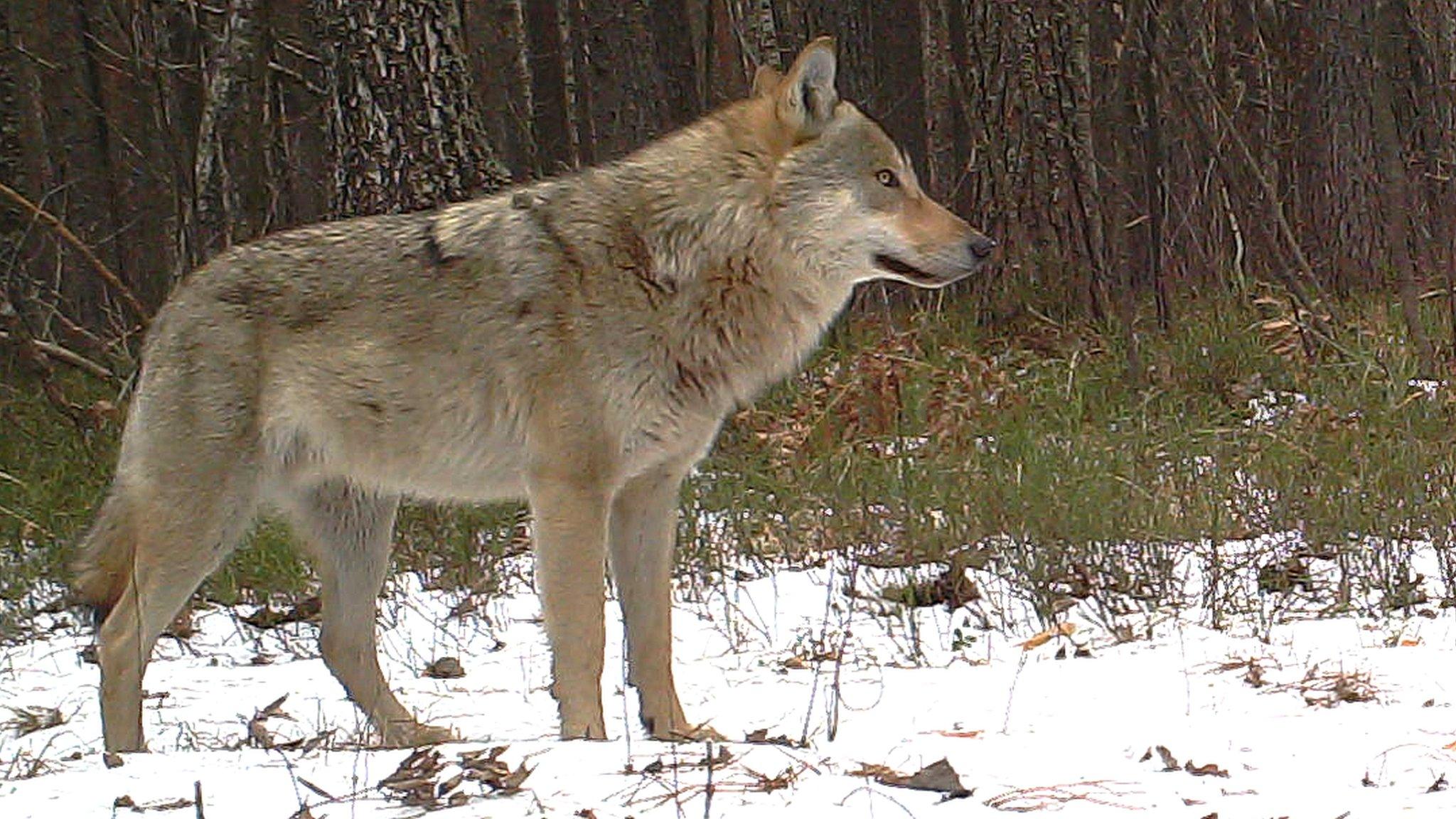Chernobyl vodka: First consumer product made in exclusion zone
- Published
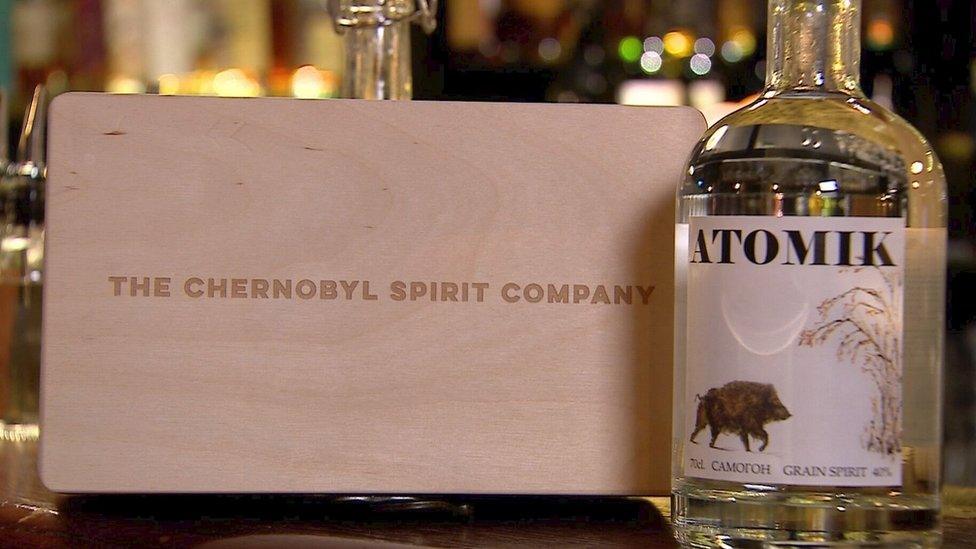
The team named their grain spirit Atomik
"It's the only bottle in existence - I tremble when I pick it up," says Prof Jim Smith, gingerly lifting a bottle of Atomik grain spirit.
The "artisan vodka", made with grain and water from the Chernobyl exclusion zone, is the first consumer product to come from the abandoned area around the damaged nuclear power plant.
The team started the vodka project by growing crops on a farm in the zone.
"Our idea then was [to use that rye grain] to make a spirit," they say.
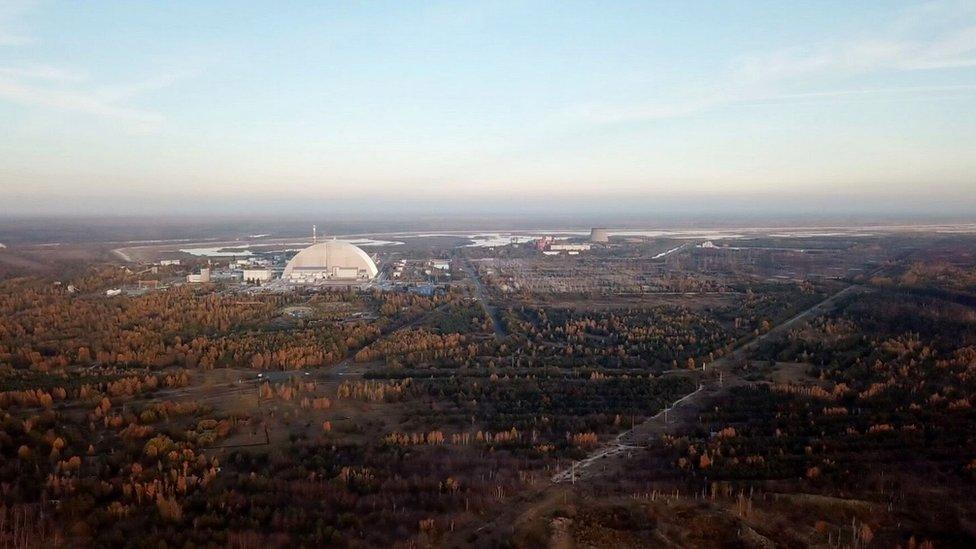
The land around the nuclear power plant has been abandoned since the 1986 accident
As well as Prof Smith, who is based at the University of Portsmouth, UK, the team behind the spirit is made up of researchers who have worked in the exclusion zone for many years - studying how the land has recovered since the catastrophic nuclear accident in 1986.
They hope to use profits from selling it to help communities in Ukraine still affected by the economic impact of the disaster.
Is the spirit radioactive?
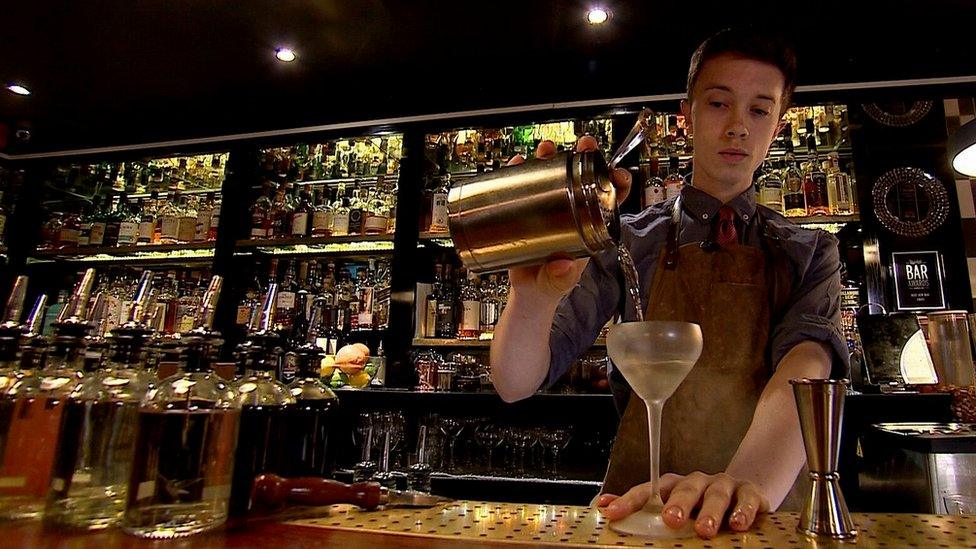
The team at Bar Swift in Soho, London make the first Atomik martini
"This is no more radioactive than any other vodka," says Prof Smith.
"Any chemist will tell you, when you distil something, impurities stay in the waste product.
"So we took rye that was slightly contaminated and water from the Chernobyl aquifer and we distilled it.
"We asked our friends at Southampton University, who have an amazing radio-analytical laboratory, to see if they could find any radioactivity.
"They couldn't find anything - everything was below their limit of detection."
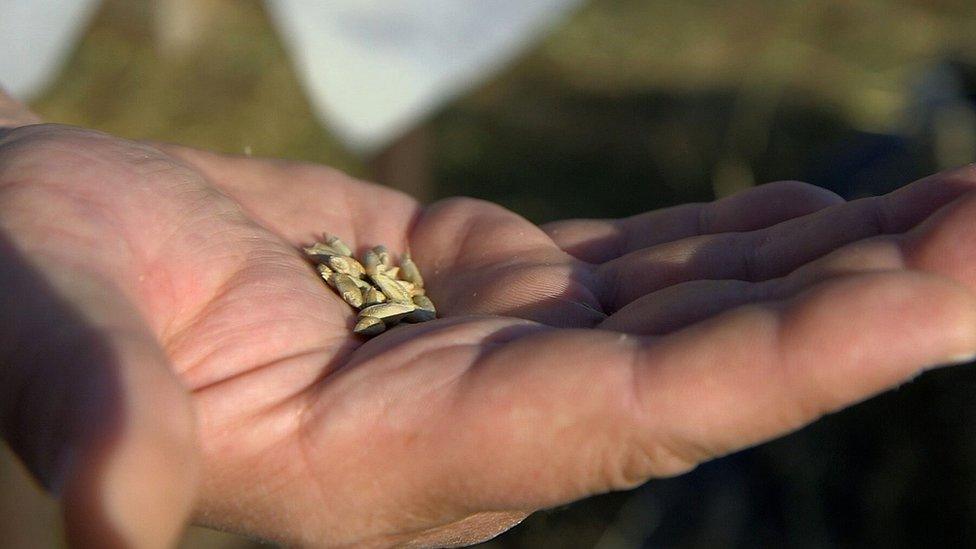
The rye grain grown in the Chernobyl exclusion zone was "slightly contaminated"
Dr Gennady Laptev, a scientist based at the Ukrainian Hydrometeorological Institute, in Kiev, is also a founding member of the newly created Chernobyl Spirit Company.
Speaking to me during a trip to the exclusion zone, where I was following the team as they carried out their environmental research and crop-growing studies, external, he explained that the rye grain and the resulting spirit show how some of the land could be used productively.
"We don't have to just abandon the land," he says. "We can use it in diverse ways and we can produce something that will be totally clean from the radioactivity."
Why did scientists specifically make a vodka?
In part, because a clean, distilled product can be made from contaminated grain. But, according to Prof Smith, this project aims to go beyond making booze with a unique selling point. He hopes the sale of the vodka could provide support to communities around the exclusion zone.

Communities around the exclusion zone, such as the town of Narodichi, still struggle with the economic aftermath of the accident
In his work in Chernobyl since the 1990s, Prof Smith says he has been struck by how the economic conditions for people in Ukraine have remained stubbornly difficult, while the landscape has slowly recovered.
"There are radiation hotspots [in the exclusion zone] but for the most part contamination is lower than you'd find in other parts of the world with relatively high natural background radiation," he says.
"The problem for most people who live there is they don't have the proper diet, good health services, jobs or investment."
The aim of selling Chernobyl artisan vodka and hopefully making a profit, he says, is to enable the team to distribute most of the money to local communities. The rest will be reinvested in the business, although Prof Smith hopes to provide the team with an income to work on their "social spirit enterprise" part time.
"Because now," Prof Smith adds, "after 30 years, I think the most important thing in the area is actually economic development, not the radioactivity."
Chernobyl's post-human landscape
What does it taste like?
With the help of the expert team at a cocktail bar in London, I later compare Atomik with a house vodka.
"It's more of a grain spirit than a vodka, so it has much more fruity notes - you can still taste the rye," says Sam Armeye, from Bar Swift, in Soho.
So what cocktail would Sam make from it? "Definitely a classic martini but I'd also mix it with champagne," he says.
With only one bottle produced so far, it will be a while before Atomik martinis are available - but Prof Smith and the team hope to produce 500 bottles this year, selling it initially to the increasing number of tourists who now visit the exclusion zone.
- Published14 February 2019

- Published26 April 2015
